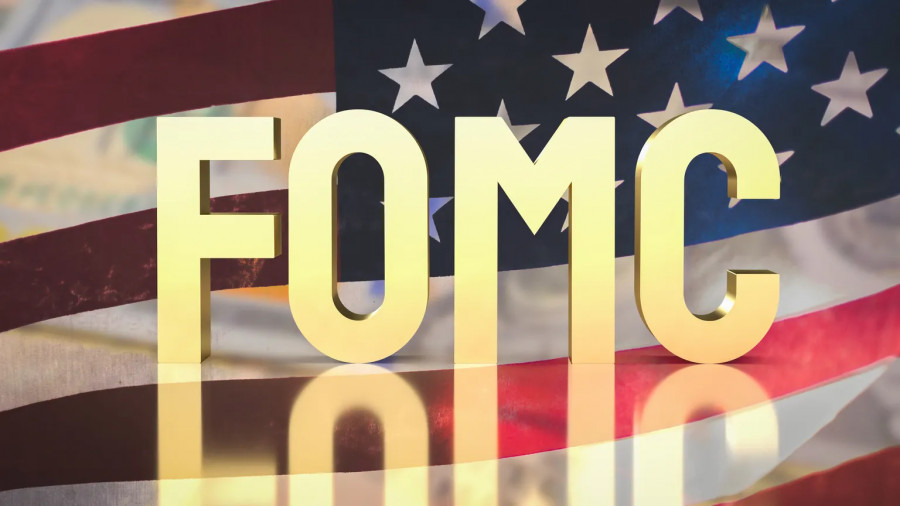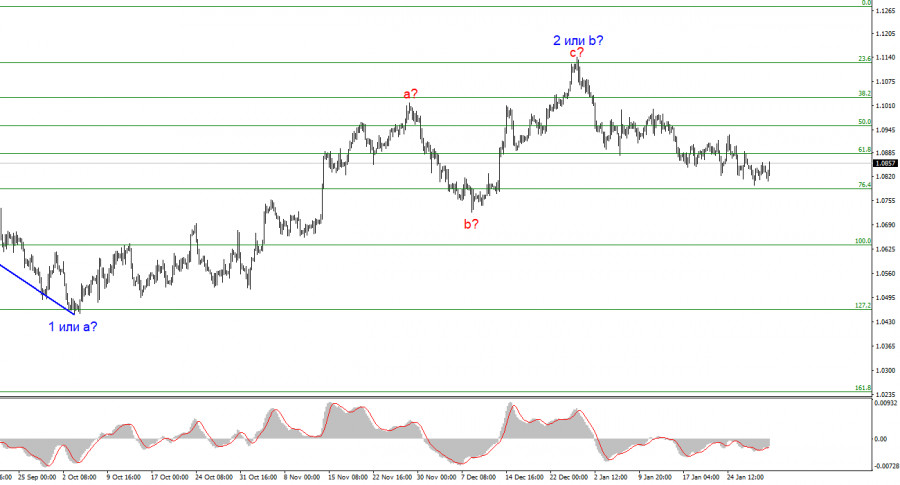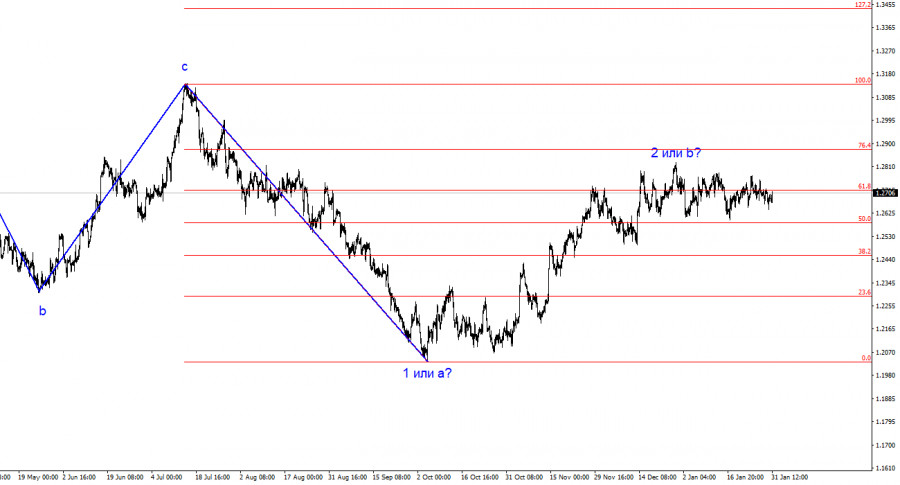
At a leisurely pace and with muted movements, we approached one of the key events in January. The two-day Federal Reserve meeting will conclude, during which at least some clarity on rates for the first half of the year is expected. As a reminder, market participants continue to have heated debates about when the first rate cut in the US will take place and how many will occur in total this year. In my recent articles, I have already mentioned that opinions still vary from March to June and from 4 to 7 easing steps. And even major players like Goldman Sachs or Morgan Stanley have polar opinions. Everyone has their own point of view, but only one of them will be right. Even Fed Chair Jerome Powell himself does not know which one.
On this basis, the dollar's fate, at least for Thursday, will entirely depend on Powell and the tone of his speech. Markets assume that regardless of when the decision on the first rate cut will be made, Powell will maintain the most cautious stance. There are several reasons for this. First, the US economy is stable and strong, and the labor market is resilient. There is simply no need for the FOMC to rush to lower the interest rate if inflation is still far from the target. Second, inflation risks persist. Many analysts have said that we should not expect the same rate of slowdown in 2024 as in 2023 because of the "low base." However, there is no guarantee that inflation will continue to fall, as the Fed has not tightened monetary policy for three consecutive meetings.

Personally, I believe that Powell will be extremely cautious, refrain from precise forecasts, and loud statements. Most likely, he will (as in December) talk about maintaining the inflation target, economic stability, that there is no need to rush with rates, and the serious consequences of any wrong decision on the part of the central bank. The dollar has a slightly higher chance of rising; however, on Thursday and Friday, there will be enough important events for this growth to turn into a new decline. Unfortunately, the market may interpret Powell's statements as dovish, even if they are not.
Based on the analysis, I conclude that a bearish wave pattern is being formed. Wave 2 or b appears to be complete, so in the near future, I expect an impulsive descending wave 3 or c to form with a significant decline in the instrument. The failed attempt to break through the 1.1125 level, which corresponds to the 23.6% Fibonacci, suggests that the market is prepared to sell a month ago. I will only consider short positions with targets near the level of 1.0462, which corresponds to 127.2% Fibonacci.

The wave pattern for the GBP/USD pair suggests a decline. At this time, I am considering selling the instrument with targets below the 1.2039 mark because wave 2 or b will eventually end, and could do so at any moment. However, since we are currently observing horizontal movement, I wouldn't rush to short positions at this time. I would wait for a successful attempt to break through the 1.2627 level in order to grow more confident about the instrument's decline.
The material has been provided by InstaForex Company - www.instaforex.comfrom Forex analysis review https://ift.tt/MUD7Rfn
via IFTTT
